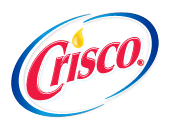Time was that when a customer came into your store, the purchase decision was made there. That’s true no longer. You could count on the majority of your customers making decisions about your stock based on a small variety of factors in the past. Foremost among those would be the context of the product—displaying Crisco amongst baking goods drives a different decision making process in the shopper’s mind than does displaying it as a rash treatment or for tar removal. The product itself also served to communicate its features and merits—if the box said “new and improved” the shopper believed that it was. It seems like it was common sense, but common sense is about to become “commoner.”

Image via Wikipedia
But that was then and this is now.
Nowadays, many shoppers are carrying their advisers in their pockets—the context and communications of the product itself mean less than what they find on product review sites and in price-comparison tools. A customer may enter your store out of habit, but when deliberating between their purchase options a savvy consumer may consult epinions for insight or Amazon’s customer reviews. Even telemarketers must be wary; an otherwise receptive contact may disconnect after seeing your company’s getsatisfaction page is full of gripes.
Getting the customer to cross your store’s threshold or to call in to you was once considered the hard part—but now, additional hurdles loom before the decision to purchase. The price must compare favorably on sites like pricegrabber.com and retailmenot.com or Amazon’s new price checker tool. For larger purchases, a consumer might even crowdsource the purchasing decision to their friends on Facebook or Twitter.
Having a social presence for your brand and products was once optional, a way to differentiate yourself favorably to the digital elite. In the future, every company will be discussed in one or more social presences—the only differentiation will be whether your company is part of that conversation.






